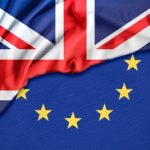On Friday, 2 March 2018, at the Mansion House in London, Theresa May delivered her most comprehensive Brexit speech to date. It was a speech designed to bridge the divide between Remain and Leave voters as she tried to explain Britain’s future relationship with the EU.
To international business economists like myself, this was a welcome speech, with very insightful details into how Britain was looking to trade with the EU and other countries after D-day a.k.a. “Transition Period“. The Prime Minister spoke about approaching a crucial moment in the negotiations and specified that existing models like the Norway model would not work because that would mean having to implement new EU legislation automatically and, in its entirety and would also mean continued free movement.
A Canada model would also not be suitable on World Trade Organisation terms because that would mean customs and regulatory checks at the border and damage the integrated supply chains of both EU and British firms – inconsistent with the commitments that both Britain and the EU have made in respect of Northern Ireland.
The most positive thing about the speech however was its tone. It was in many ways a call to partnership and not protectionist mantra. Mrs May is right in many aspects but in one key detail in particular.
When other countries seek to become part of the EU, they have to make their laws, regulations and standards align with those of the EU. In this case however, Britain is already aligned with the EU. What Britain wants is some leeway to be different in certain respects. When Britain leaves the EU, the Withdrawal Bill will bring EU law into UK law.
In the future, Parliament might choose to pass an identical law to EU law in some cases – when businesses who export to the EU indicate that it is in their interest to have a single set of regulatory standards that mean they can sell into the UK and EU markets. If Parliament on the other hand decides not to achieve the same outcomes as EU law, it would be in the knowledge that there may be consequences for British market access.

TRUMP’S PROTECTIONIST TARIFFS
A few days after the British Prime Minister’s speech, the US President, Mr Trump signed an order for a 25% tariff on imports of steel and a 10% tariff on aluminium into the US, saying some exceptions will be made for Canada and Mexico, prompting fears of trade war. While the US steel industry is obviously happy about the plans, it seems everyone else is upset.
Recall that Mr Trump campaigned on saving US steel and aluminium jobs, which have been lost to cheap foreign imports. But these tariffs threaten to undermine decades of agreement in international trade and have split the Republican party. There was no congressional member of his own party present for the White House announcement.
The US President is planning tariffs on $60bn worth of Chinese goods, in part because of alleged Chinese theft of intellectual property – which means design and product ideas. The White House said it has a list of more than 1,000 products that could be targeted by the tariffs of 25%. Companies will get a chance to comment before they are put into effect. Mr Trump wants to cut the trade deficit with China – a country he has accused of unfair trade practices since before he become president.
Officials from China and Europe have threatened retaliation. Richard Warren, head of policy at UK Steel, said the US was a significant export market for British producers, accounting for around 15% of UK steel exports. “This really does throw a spanner in the works” he said. The European Union has indicated it could retaliate, potentially starting a trade war with the US.

European Commission President Jean-Claude Juncker said: “We will not sit idly while our industry is hit with unfair measures that put thousands of European jobs at risk.” “I had the occasion to say that the EU would react adequately and that’s what we will do.” “The EU will react firmly and commensurately to defend our interests. The Commission will bring forward in the next few days a proposal for WTO-compatible counter-measures against the US to re-balance the situation.”
It’s not just Europe and the UK that have voiced concern, Australia’s trade minister said it will distort global trade and cost jobs. He also highlighted the risk of retaliatory measures as Asian exporters sought more detail on the plans.

AN OVERVIEW
A trade war is when countries try to attack each other’s trade with taxes and quotas. One country will raise tariffs, a type of tax, causing the other to respond, in a tit-for-tat escalation. This can hurt other nations’ economies and lead to rising political tensions between them. This is a form of protectionism. Protectionism is trying to use tariffs to boost your country’s industry and shield it from foreign competition.
A trade war will be bad in this scenario, but Mr Donald Trump does have a point. China has been flouting international property rules and will have more to lose in a trade war. This flouting of international property rules has also resulted in a huge US trade deficit with China.
No party wants a trade war. Britain’s tone on Brexit is much softer and open to compromise. The US tone on trade seems to indicate a much tougher stance. Analysts might argue that this is because one side has more to lose than the other. Maybe what all sides need however is a more reconciliatory tone. Partnership will be better than conflict.

On Monday, 2nd of April 2018, China imposed tariffs of up to 25% on 128 US imports, including pork and wine, affecting some $3bn (£2.1bn) of imports. Beijing said the move was to safeguard China’s interests and balance losses caused by new US tariffs. The markets fell as a result, International Business Economists continue to monitor the situation.
Dr Tolu Olarewaju is a lecturer in Economics at Staffordshire University. For more information on International Business and Business Strategy courses at Staffordshire University, please visit www.staffs.ac.uk.





